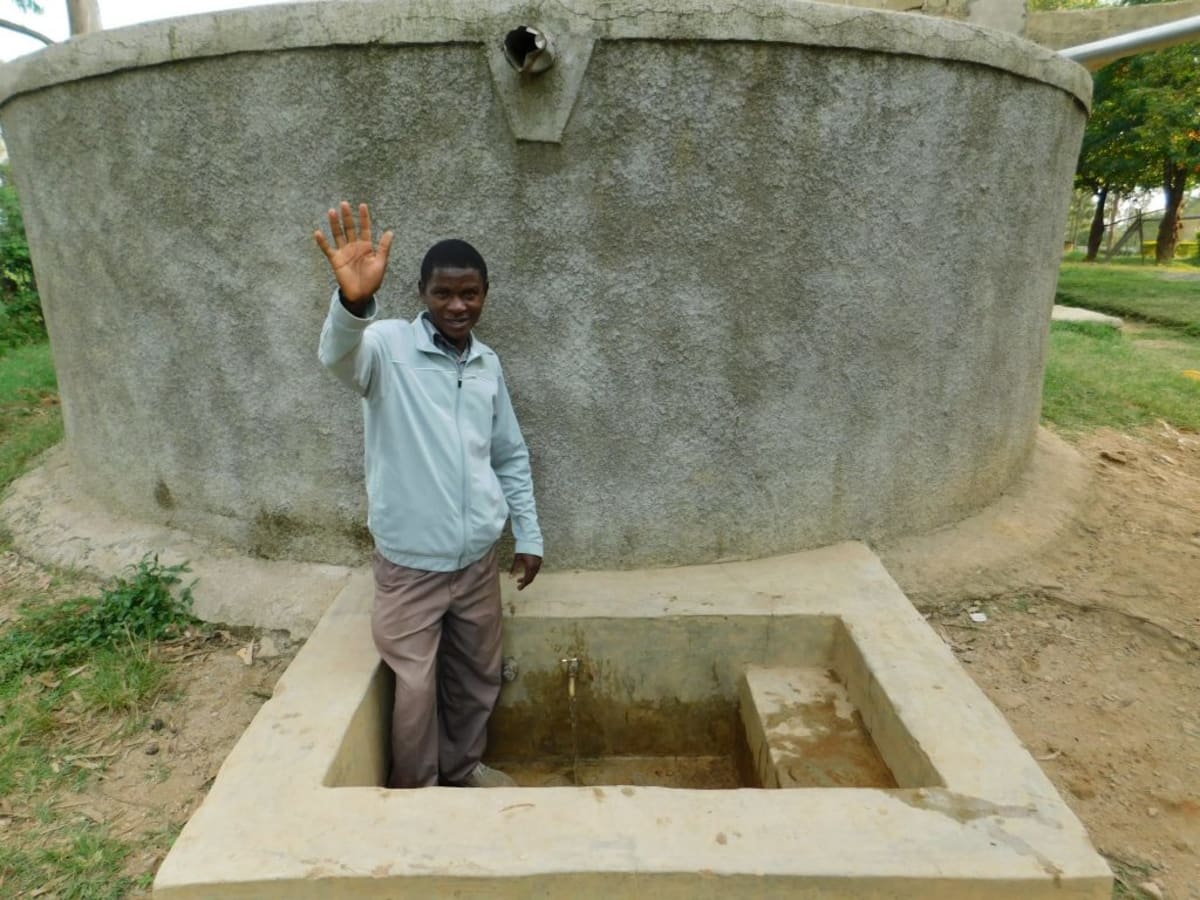Lusiola Primary School was started in 1943. The school has a total of 579 pupils of which 292 are boys and 283 are girls. There's also an early education department that hosts 120 students, 75 boys and 45 girls. The school employs 18 teachers and two support staff.
(Editor's Note: While this many people may have access on any given day, realistically a single water source can only support a population of 350-500 people. To learn more about how we determine the number of people served, click here.)
Water
The school doesn't have a source of water. Instead, students have to go out into the surrounding community to find what they need. Most often, students go to a protected spring that is not too far from the school. They're required to have a full container of water each morning when they enter the school gate.
Not all students are stopping by the protected spring to get safe water, though; many fill their containers at the most convenient but dirtiest spots along the walk to school. The school reports that there are always cases of waterborne illnesses such as typhoid.
Sanitation
The school has a total of 12 latrines split between the genders. The 12 latrines are in poor condition, not to mention they're just not enough for the large number of students relying on them. The headteacher commented that there are very long lines during class breaks, with wait times that actually cut into the next class.
Some of the doors don't even lock, so peers have to guard each other while the latrine is in use. Because of these poor conditions, it's not unheard of for a student to seek privacy elsewhere. There's nowhere to clean up before returning to class, either.
Here's what we're going to do about it:
Training
Training will be held for two days. The facilitator will use PHAST (participatory hygiene and sanitation transformation), ABCD (asset-based community development), CTC (child to child), lectures, group discussions, and handouts to teach health topics and ways to promote good practices within the school. The CTC method will prepare students to lead other students into healthy habits, as well as kickstart a CTC club for the school.
Handwashing Stations
This CTC club will oversee the new facilities, such as handwashing stations, and make sure they are kept clean and in working condition. The two handwashing stations will be delivered to the school, and the club will fill them with water on a daily basis and make sure there is always a cleaning agent such as soap or ash.
VIP Latrines
Two triple-door latrines will be constructed with local materials that the school will help gather. And with a new source of water on school grounds, students and staff should have enough to keep these new latrines clean.
Rainwater Catchment Tank
A 50,000-liter rainwater catchment tank will help alleviate the water crisis at this school. The school will also help gather the needed materials such as sand, rocks, and water from the spring for mixing cement. Once finished, this tank can begin catching rainfall that will be used by the school’s students and staff.
We and the school strongly believe that with this assistance, standards will significantly improve. These higher standards will translate to better academic performance!

 Rainwater Catchment
Rainwater Catchment
 Rehabilitation Project
Rehabilitation Project





































